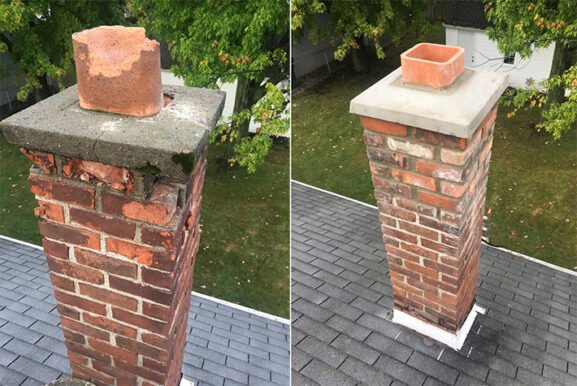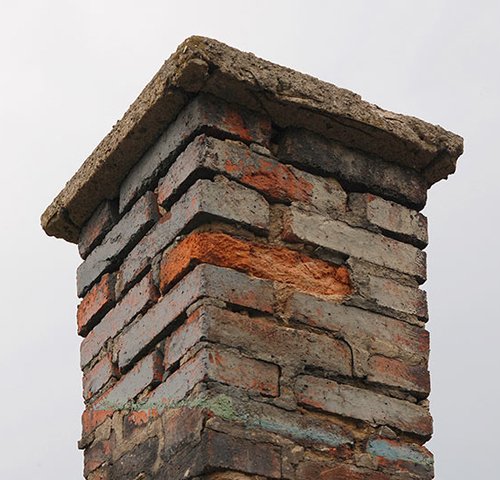Understanding the Average Cost for Chimney Repair and What Influences It
Key Takeaways
- Most chimney repair jobs cost between $300 and $1,500, depending on the scope of work and materials used
- Minor repairs like mortar joint repointing are relatively inexpensive, while structural damage or full rebuilds can cost several thousand dollars
- Labor rates, access difficulty, chimney height, and geographic location significantly impact pricing
- Routine inspections and timely maintenance help prevent high repair costs down the line
Why Chimney Repair Costs Vary More Than You Think
Homeowners often feel caught off guard by chimney repair quotes. What seems like a straightforward job—fixing a crack or resealing a cap—can quickly escalate into a larger project depending on what’s uncovered. That’s because chimneys are complex structures exposed to the elements, and small problems left unaddressed can lead to expensive structural damage.
The average cost for chimney repair falls within a wide range—typically between $300 and $1,500, but in more serious cases, it can reach up to $4,000 or more. To understand where your project might land on this spectrum, it’s important to know what factors into these estimates.
Common Types of Chimney Repairs and Their Cost Ranges
Masonry Repairs
Masonry is the backbone of most chimneys. Over time, bricks and mortar joints deteriorate from freeze-thaw cycles and water intrusion. Repointing mortar (also called tuckpointing) can cost $300 to $800 for small areas. Larger sections requiring full brick replacement or relining may push the price higher, depending on access and height.
Cracked or spalling bricks usually need to be removed and replaced. This process can range from $200 for a few bricks to $1,500 or more for widespread issues, especially if scaffolding is required.
Chimney Crown and Cap Repairs
The chimney crown (the concrete slab at the top) and the cap (the metal or mesh cover) play crucial roles in keeping moisture and animals out. Repairing or replacing a damaged crown might cost $150 to $500, while a new cap installation typically runs $150 to $300, depending on the material and customization.
These components are essential for long-term chimney health, and neglecting them can lead to more extensive water damage in the flue and masonry below.
Flashing Repair
Chimney flashing seals the gap between the chimney and the roof. When it fails, water leaks into the attic or ceiling. Repairing flashing usually costs between $300 and $600, depending on the roofing materials and ease of access.
Proper flashing repair can prevent thousands of dollars in interior water damage. It’s often one of the first things chimney inspectors check when diagnosing leaks.
Flue Liner Repairs
The flue liner protects your home from the heat and gases produced during combustion. If damaged or missing, it can be dangerous and costly. Stainless steel liner installation can range from $1,500 to $3,500, depending on chimney height and diameter.
For less severe damage, a ceramic or cast-in-place relining might offer a cheaper alternative. However, liner work is always one of the more expensive repairs due to material costs and labor intensity.
Factors That Drive Chimney Repair Costs Up or Down
Height and Access
Tall chimneys require more equipment and safety precautions, which increases labor time and insurance liability. If your chimney is hard to reach or surrounded by landscaping or sloped roofing, expect higher labor costs.
Regional Pricing Differences
Where you live plays a big role in what you’ll pay. For instance, repair costs in urban areas like New York or San Francisco tend to be higher due to elevated labor rates and permit fees. Meanwhile, rural or small-town rates are often lower. According to HomeAdvisor’s national averages, most homeowners spend between $160 and $750, but this data varies widely by ZIP code (source).
Level of Damage
Small cracks or minor water leaks are less costly to fix than extensive structural damage. However, issues like leaning chimneys, large gaps in mortar, or missing bricks often require professional intervention and can lead to rebuilds—driving costs into the thousands.
Materials Used
Some homeowners opt for premium materials that enhance longevity and curb appeal. For example, choosing stainless steel for a chimney liner or copper for a chimney cap can increase the upfront cost but lower future maintenance. Conversely, cheaper materials may reduce short-term spending but require earlier replacement.
Preventive Maintenance That Reduces Long-Term Costs
Annual inspections and cleanings are among the most effective ways to reduce repair costs over time. Chimney sweeps often identify minor problems before they escalate. These services usually cost $100 to $300, which is a small price to pay compared to extensive structural repair.
Moisture is the number one enemy of chimneys. Applying a breathable water repellent to masonry helps protect against weathering. These treatments, costing around $150 to $400, can extend the life of your chimney and minimize future repairs.
Even installing or repairing chimney caps is a preventive step. They help keep rain, animals, and debris out—significantly reducing the chance of water damage or flue blockages that could otherwise require costly remediation.
What to Expect During an Estimate and Inspection
When a chimney technician inspects your structure, they’ll look at the brickwork, crown, cap, flue liner, and flashing. It’s not uncommon for a quote to include multiple small repairs—each contributing to the total. Reputable contractors will also explain their findings and offer photos or videos taken during the inspection.
You may be given a range of options, such as repairing a small crack now or waiting for the next season. While delaying can feel easier on the wallet, it often results in higher costs later.
Always request a detailed estimate that breaks down materials, labor, and optional upgrades. Avoid contractors who offer vague pricing or pressure you into immediate work. Instead, work with licensed and insured professionals who understand both local building codes and the risks specific to your climate.
Making Informed Decisions on Chimney Repairs
When dealing with chimney issues, knowing the potential costs and common repair types helps you avoid surprises and make informed decisions. While some repairs are unavoidable, timely action and preventive care go a long way in controlling expenses and protecting your home.
Understanding the typical price ranges and what influences them can prepare you for honest conversations with your contractor. Even if your chimney appears fine from the outside, hidden issues can exist. By staying proactive, you reduce the chances of future emergency repairs that cost far more than regular upkeep.

